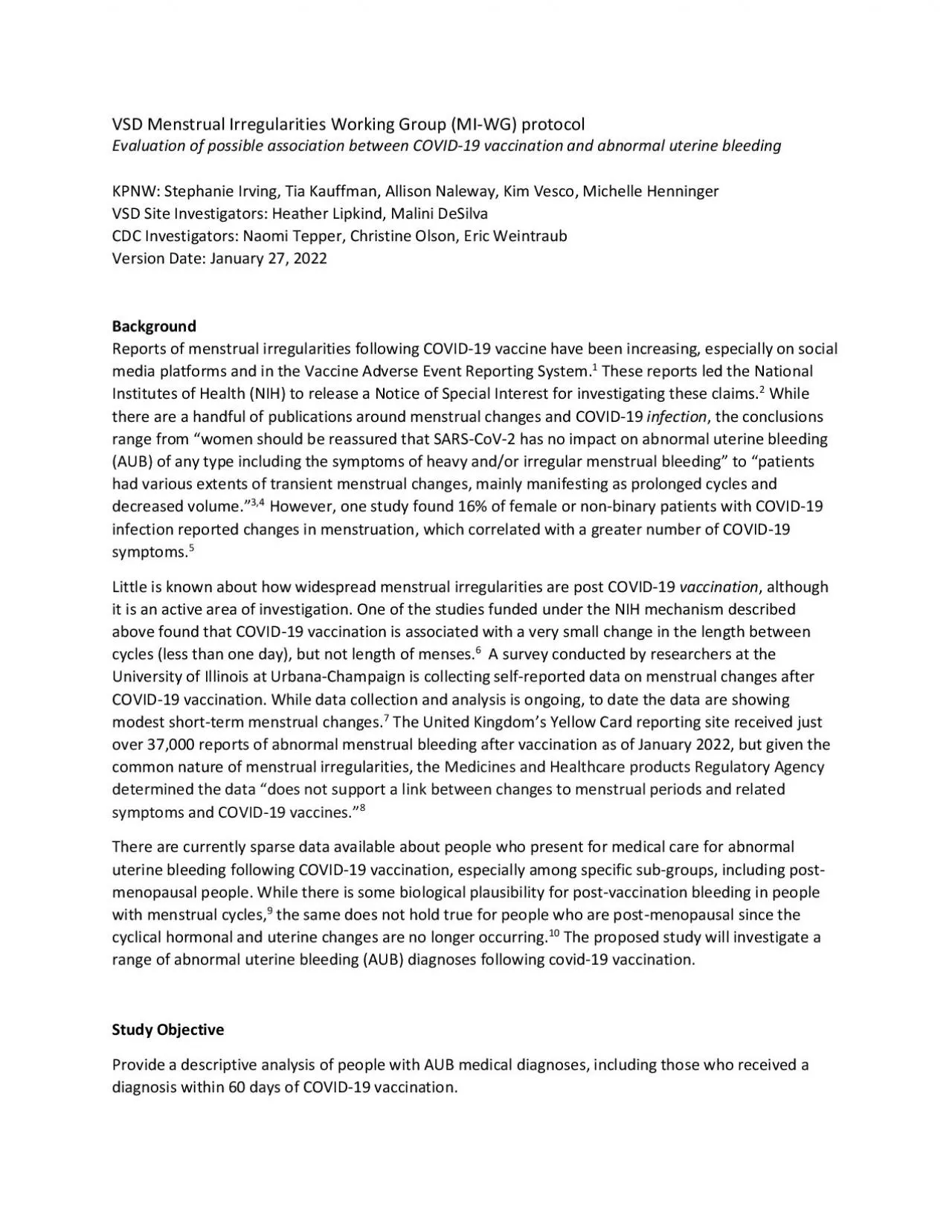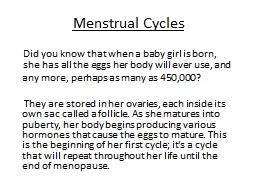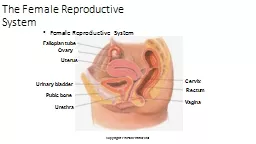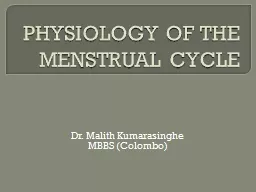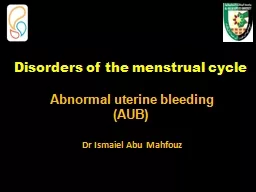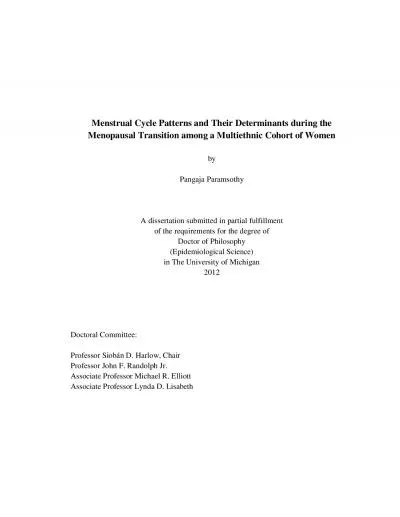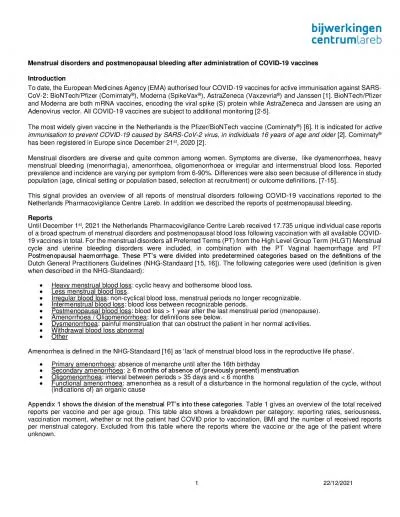PDF-Menstrual Irregularities
Author : anderson | Published Date : 2022-08-31
VSD Working Group MI WG protocol Evaluation of possible association between COVID 19 vaccination and a bnormal uterine bleeding KPNW Stephanie Irving Tia Kauffman
Presentation Embed Code
Download Presentation
Download Presentation The PPT/PDF document "Menstrual Irregularities" is the property of its rightful owner. Permission is granted to download and print the materials on this website for personal, non-commercial use only, and to display it on your personal computer provided you do not modify the materials and that you retain all copyright notices contained in the materials. By downloading content from our website, you accept the terms of this agreement.
Menstrual Irregularities: Transcript
Download Rules Of Document
"Menstrual Irregularities"The content belongs to its owner. You may download and print it for personal use, without modification, and keep all copyright notices. By downloading, you agree to these terms.
Related Documents

